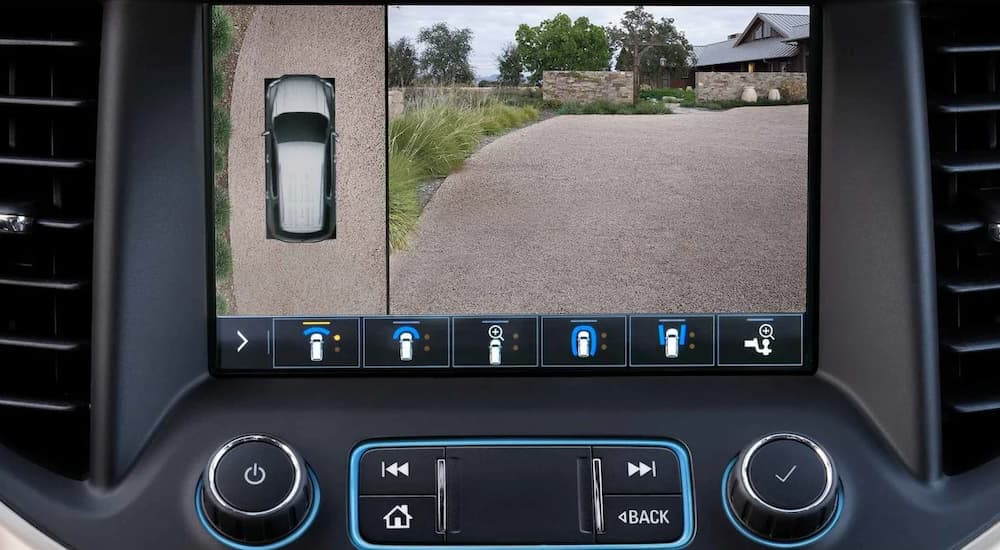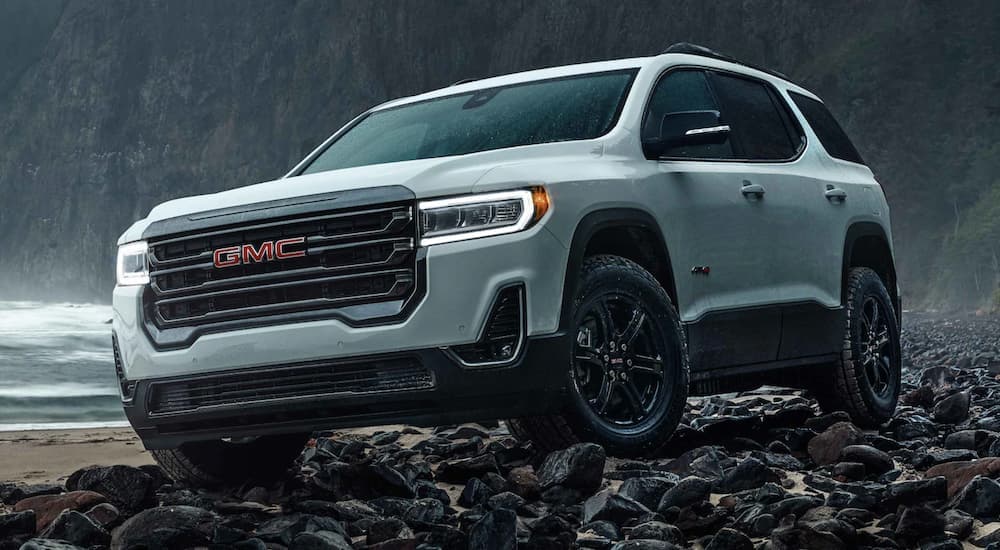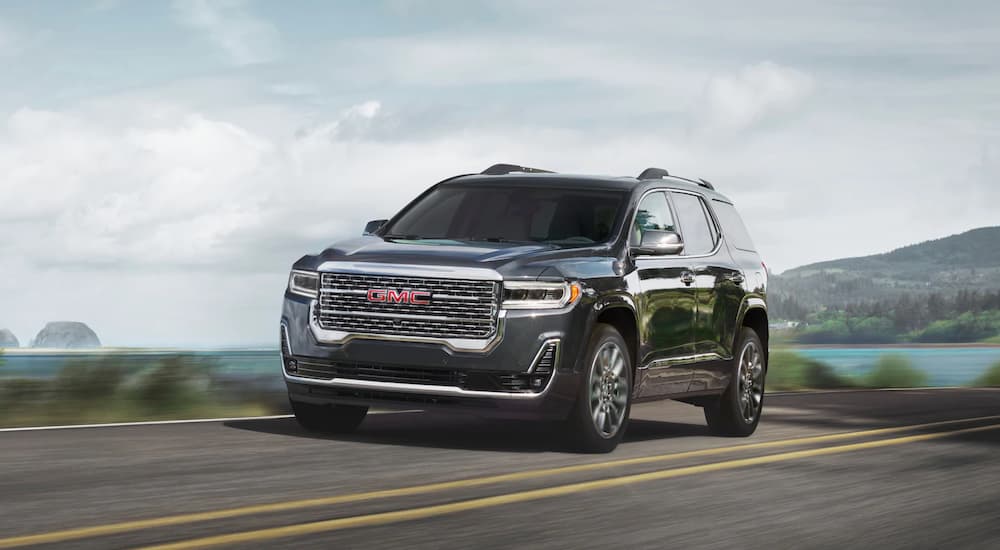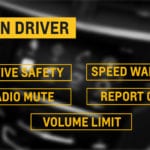If you’re searching for online GMC Acadia sales, you are probably interested in details that provide insight into the vehicle’s many features and benefits. For most people, especially people shopping for family SUVs like the Acadia, the safety features included in a vehicle are a huge selling point. Many newer cars come standard with entire suites of high-tech safety and convenience features. From Adaptive Cruise Control to Parallel Park Assist, safety technology is growing and evolving at an incredible rate.
With so many safety features available, it may be easy to overlook some important ones, like Teen Driver. Over the last few years, some manufacturers have started to see the importance of safety features geared toward the most accident-prone drivers on the road. GMC is leading the pack with its unique Teen Driver technology. But what exactly are these features, and exactly how successful are they?

What Is Teen Driver Mode?
Teen Driver mode is a suite of safety measures designed around the habits of teen drivers. The program makes parents’ dreams come true by giving them control over certain features in the car to provide a safer ride for teens. Teen Driver is different from the normal safety features offered, specifically because it provides boundaries for new drivers.
To get started, a key fob must be set up as the Teen Driver-designated key fob. This alerts the vehicle that a teen driver is behind the wheel and automatically activates the Teen Driver mode. You can program up to eight Teen Driver key fobs. From here, you have the option to configure specific settings that will become active when the teen driver uses their fob.
Here’s what you can do; just try not to let the power go to your head. There are five settings in total, the first being the Audio Volume Limit. It is exactly how it sounds––you can set a limit as to how loud the sound system can go. This addresses the issue of accidents caused by distractions.
The next setting is Speed Warning. The teen driver will receive a warning displayed on the Driver Information Center and hear a warning chime when a preset speed between 40 and 75 mph is reached. This is a pretty nifty idea, but we are not sure why it needs to be limited to teen drivers. There are plenty of speed freaks on the road, well past puberty.
Setting number three is the Speed Limiter, which most certainly has a ring to it. Probably the most interesting and controversial setting on the list, the Speed Limiter allows you to set a speed limit of 85 mph on the vehicle. When enabled, the vehicle cannot accelerate beyond this limit. The driver will be notified. Let’s hope no one gets into a Speed scenario when this is turned on.
I say this is the most controversial feature because out of all the controls offered, this one seems like the only one that could potentially cause problems. If programming malfunctioned, could it interfere with the speed? Additionally, what if there was a scenario in which the teen needed to increase their speed for safety purposes? Could there be a better way to approach this issue?
Buckle to Drive is the next setting. When in use, the car will not shift from park for 20 seconds after the brake pedal has been engaged if anyone is detected not wearing their seatbelt. A couple problems with this is that a heavy item on a seat can register as a person, so if you are buckled up, and the car doesn’t want to go into drive, check your cargo. Or just wait 20 seconds before gassing it.
Lastly, SiriusXM Explicit Content Filter prevents teens from listening to inappropriate content on SiriusXM satellite radio. This may not necessarily be a safety feature, but being able to minimize your child’s exposure to inappropriate content can’t hurt. This could technically fall under the label of a distraction.
Additionally, Teen Driver offers a Report Card that will show information such as overspeed warnings and if certain safety systems were triggered while your teen was driving. It can even show how many times the gas pedal was floored. Unfortunately, only one Teen Driver Report Card is available, no matter how many Teen Driver key fobs have been registered. However, you can clear the data at any time, so each trip starts fresh if you desire.
Is It Actually Effective?
According to research, teen drivers are almost four times more likely to crash than drivers 20 and older. It’s also more likely that the crash will be fatal. This is mostly because of the habits the teen drivers have, such as not wearing their seat belts, not focusing, and driving too fast. Imagine your teen driving the Acadia Denali with its 3.6L V6 engine. That’s a lot of power for a new driver.
These statistics lead us to believe that safety features that target these behaviors could be very effective. As previously mentioned, the Teen Driver Mode offered by GMC on the Acadia targets speeding, seat belt safety, and minimizing distractions like music. Researchers wanted to know more, so guess what they did? Yep! Research.
Looking at accidents that directly related to the safety features offered in vehicles, such as speeding, the IIHS was able to determine that the safety features could prevent teen driver crashes by 41%. They believe it could also greatly decrease teen injury by 47% and drastically decrease teen death associated with car accidents by a whopping 78%.
This is assuming that all technology works perfectly every time, which, let’s face it, will never happen. But even with how technology is today, car accident studies are showing that there is a reduction in car accidents because of the existing safety features. Currently, vehicle accidents are the second leading cause of death in teenagers.
The CDC states there are eight main reasons for a teen driver accident: inexperience, driving with other teens, driving at night, not using seat belts, distracted driving, drowsy driving, reckless driving, and impaired driving. GMC’s Teen Driver technology helps address several of those eight reasons. There are many car manufacturers who do not offer a teen driver feature at all, and while their existing safety features are relatively effective, they do not fully address this list of dangers.
What is the final verdict? Yes, GMC Teen Driver Mode is an effective safety measure that all vehicle manufacturers should emulate. Studies have successfully shown that teen safety programs can drastically reduce injury and death caused by vehicle accidents. So why doesn’t every vehicle have a Teen Driver Mode? With smart cars that drive themselves and hoverboards that, well, hover, there is no reason that a teen drive program can’t be in every vehicle. GMC hit it out of the park with its Teen Driver Mode, showing that safety is its top priority.
Could There Be Improvements?
The Teen Driver feature on the GMC Acadia is a massive step in the right direction. The technology promotes good habits and encourages teen drivers to behave more responsibly behind the wheel. But what other features could be considered to further teen driver safety?
According to a study by the CDC in 2020, 24% of male teen drivers and 17% of female drivers involved in fatal car crashes were under the influence of alcohol. That’s almost a quarter of the crashes. It may be impossible to keep everyone from drinking and driving, but there may be a way to involve breathalyzer technology in teen driver technology. You can purchase a breathalyzer for as little as $10, so incorporating some sort of tech into new vehicles does not seem out of the realm of possibility.
Even though there could be some improvements, GMC showed that there are ways we can improve teen safety behind the wheel. If you’re looking for a vehicle for your teen, look for an option like the Acadia that has Teen Driver Mode. It is statistically proven to protect your child more than the standard safety features. With speed control, seat belt reminders, and an automated report card, you can provide your child with a safe vehicle and safe boundaries.





